AWS Certified Developer - Associate
Serverless Application Model SAM
SAM Basics
In this lesson, we will explore the AWS Serverless Application Model (SAM) and learn how it simplifies the development, deployment, and management of serverless applications.
Imagine constructing a house with a skilled crew. While they could build it manually, having a set of specialized tools significantly speeds up and simplifies the process. In the same way, SAM serves as a powerful toolkit that streamlines serverless application development by automating key tasks.
Key Benefits of SAM
- Simplifies deployment by allowing you to define serverless applications and infrastructure as code, eliminating the need for manual configuration via the AWS Console.
- As an extension of AWS CloudFormation, SAM ensures reliability through features such as automated rollbacks and version management.
- Supports local development, testing, and debugging. You can invoke Lambda functions on your local machine, thereby accelerating your development cycle.
SAM integrates seamlessly with AWS services like Lambda, DynamoDB, and API Gateway, making it an essential tool for modern serverless architectures.
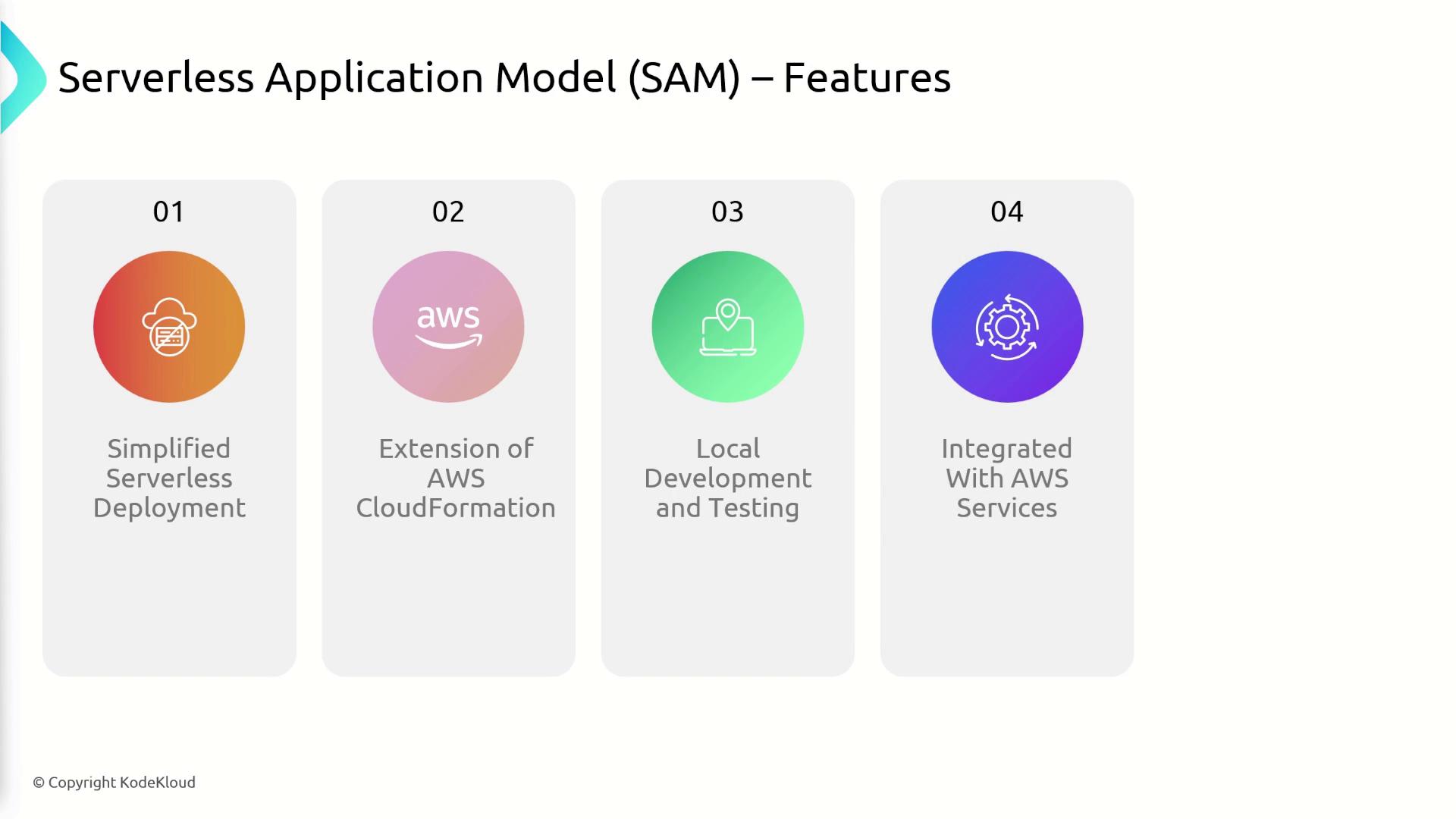
By using SAM templates, you can provision and manage these services efficiently. Additionally, SAM fits well within CI/CD pipelines to automate build, test, and deployment processes, ensuring a consistent release workflow.
Core Components of SAM
SAM consists of three main components:
- SAM Template: A configuration file that details all the AWS resources to be created.
- SAM CLI: A command-line tool for building and deploying your serverless applications.
- SAM Repository: A managed repository for storing and sharing reusable serverless applications.
![]()
SAM Template Details
The SAM template is akin to a CloudFormation template but is customized for serverless applications. For example, if you need to configure a Lambda function or an API Gateway, you would specify them in the SAM template along with details such as the function name, runtime, handler, and code location.
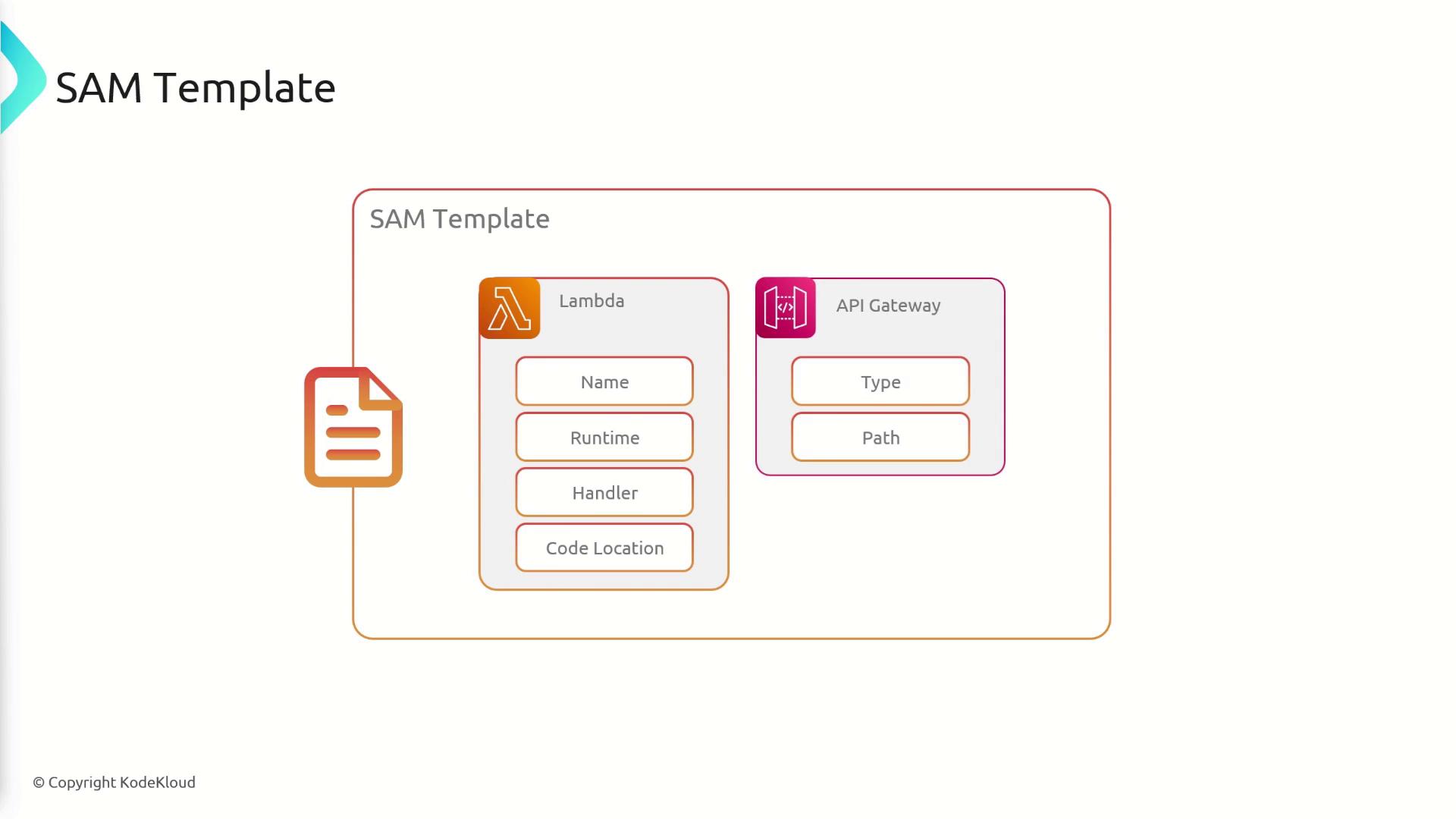
Moreover, the template can include output sections to display critical information, such as the API Gateway URL after deployment.
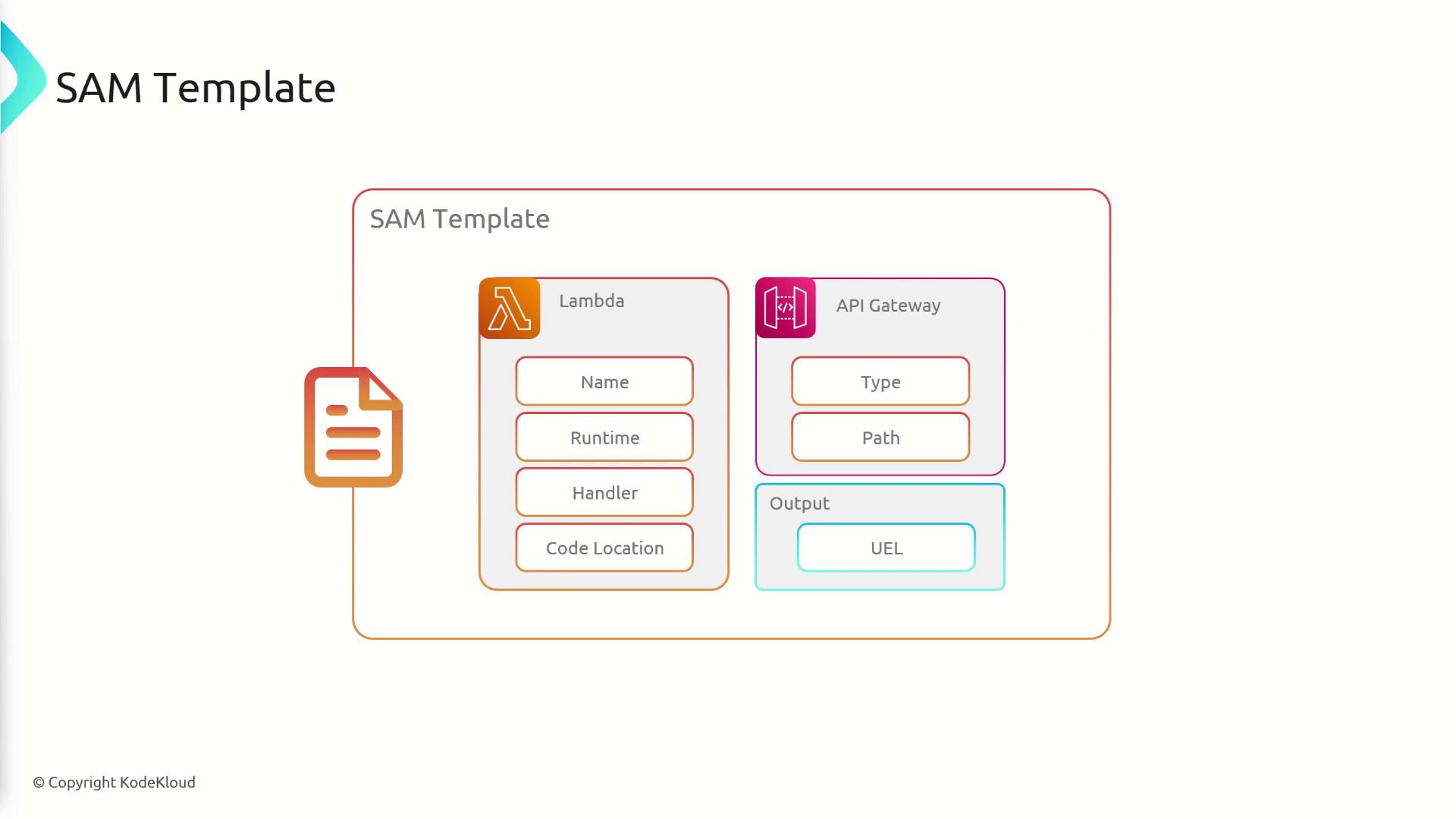
Every SAM template begins with two crucial lines: the AWS template version and the transform declaration. The transform keyword instructs AWS to convert the SAM syntax into CloudFormation code during deployment. For instance:
AWSTemplateFormatVersion: '2010-09-09'
Transform: 'AWS::Serverless-2016-10-31'
Description: A simple AWS SAM template for a serverless application.
Note
The transform declaration is essential—it enables AWS to process the SAM template as CloudFormation, ensuring seamless resource management.
Leveraging the SAM CLI
The SAM CLI is designed to simplify both the initial scaffolding of your project and the ongoing deployment process. Here are some key SAM CLI commands:
- sam init: Initializes a new SAM application, setting up a template, a basic function, and boilerplate documentation.
- sam build: Compiles your source code, resolves dependencies, processes the SAM template, and prepares the deployment package.
- sam deploy: Packages and deploys your application to AWS, converting the SAM template into a CloudFormation stack, uploading artifacts to an S3 bucket, and deploying the stack.
- sam logs: Retrieves, tails, and filters logs from your AWS Lambda functions, which is extremely useful for debugging and monitoring.
- sam local invoke: Executes Lambda functions locally for testing without deploying to AWS.
- sam validate: Checks your SAM template for configuration errors.
- sam publish: Publishes your application to the AWS Serverless Application Repository.
The typical workflow with SAM involves initializing your project with sam init, building it with sam build, and deploying it with sam deploy. Previously, the sam package command was used to handle deployment artifacts, but its functionality is now incorporated into the sam deploy process.
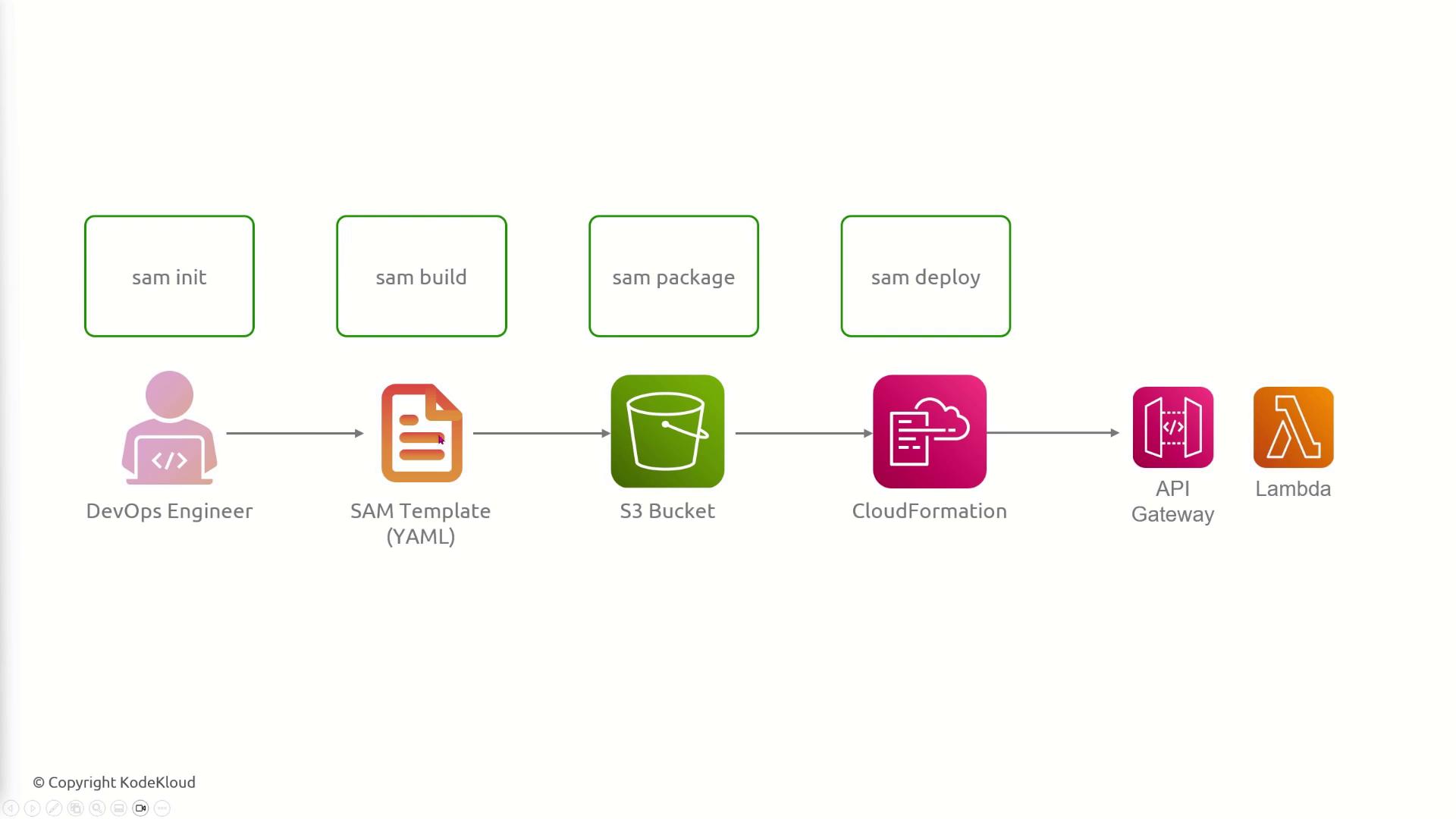
Continuous Development with SAM Sync
One of the standout features of SAM is the sam sync command. This command automatically synchronizes your local code changes with AWS Lambda, allowing for continuous iteration without manually redeploying changes each time.

Summary
SAM is a robust toolkit designed to enable developers to build, deploy, and manage serverless applications on AWS efficiently. It allows you to define AWS resources as code, leverages AWS CloudFormation for reliable deployments, and offers a powerful CLI with commands including init, build, deploy, and sync.
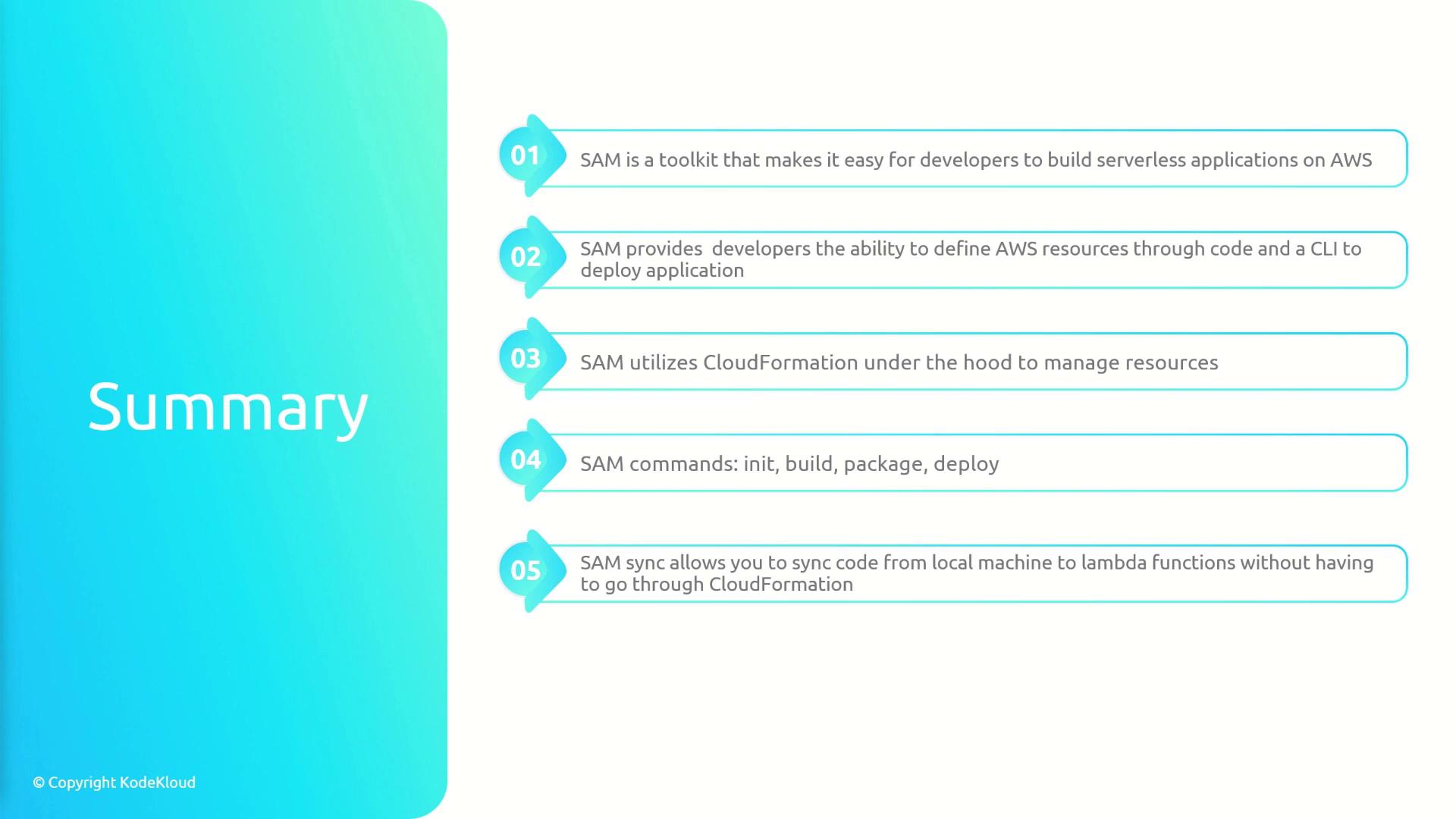
Embrace SAM to streamline your serverless application development and enjoy a more efficient, automated, and scalable workflow for AWS deployments.
Watch Video
Watch video content